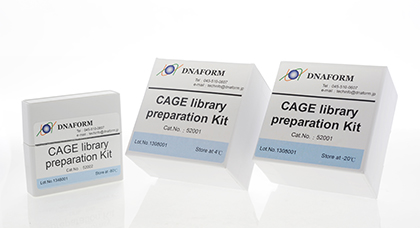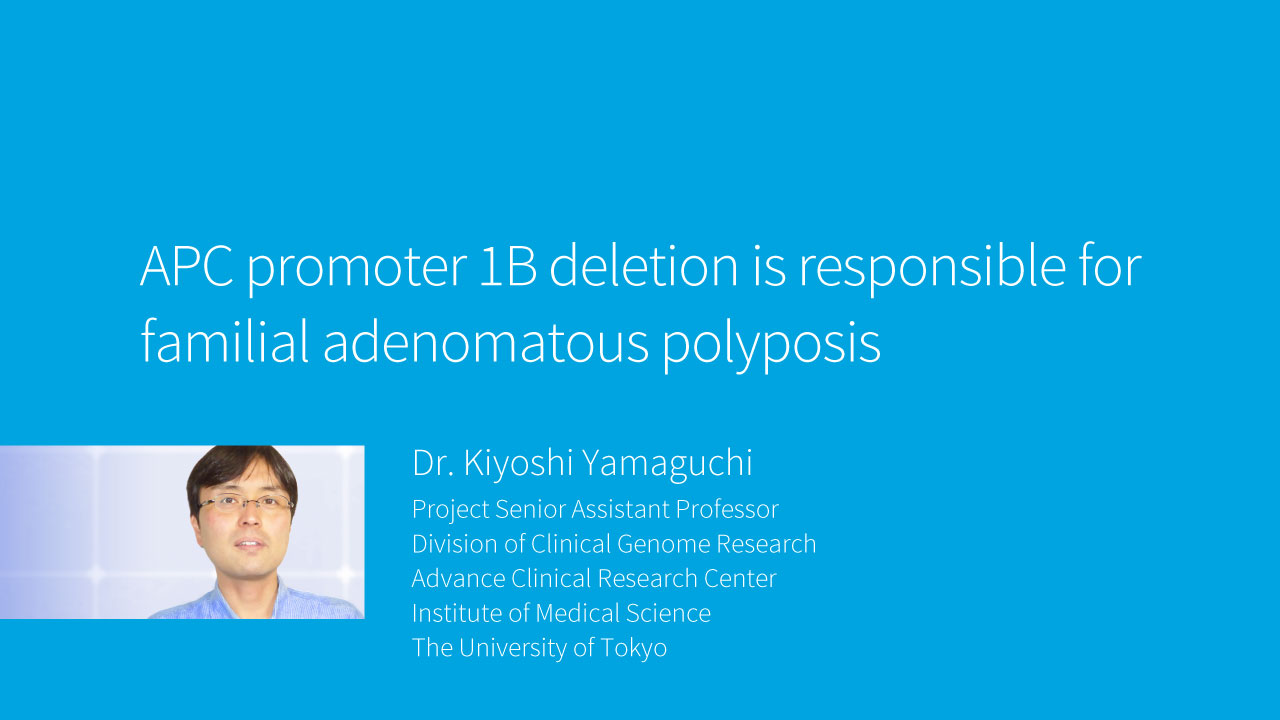Q&A
What is the focus of your research?
I am conducting research on the investigation and treatment of colon cancer and its development mechanisms. In recent years, research has become more focused on the genomic analysis of cancer.
What inspired you to pursue this line of research?
Cancer is often referred to as a genomic disease but as cancer research has advanced, there has been a gradual shift towards cancer genome analysis.
Have you performed genome-wide expression analysis before?
The first time I used microarrays was during my studies in the United States. Since then, I have conducted research with genome-wide gene expression analysis by using RNA sequencing and microarrays.
Are there any unsatisfying aspects to CAGE?
This is a subject that often comes up with regard to microarray, RNA-sequencing, and CAGE but I think it is best to consider these three methods as completely separate. Researchers choose the technology based on the purpose of their research and the methods that are most effective for reaching their objectives. In this sense, I do not think there are any weaknesses or unsatisfactory aspects to the technologies available.
What are your reasons for choosing CAGE?
We recently identified a de novo deletion in the promoter region of APC, which markedly decreased the transcription of the mutant allele. We utilized CAGE to closely investigate the expression of APC genes in the patient.
What new discoveries did you make by using CAGE?
The simplest answer is that we were able to identify the promoter-specific gene expression almost perfectly.
What expectations did you have for CAGE?
With CAGE, we were able to compare gene expression levels at the transcriptional start point. Therefore, we assumed that we could also use CAGE to compare promoter activity in a similar manner.
What are the key advantages of using CAGE?
I believe the main advantage is that we are able to comprehensively analyze promoter-dependent gene expression. Another benefit is that CAGE shows genetic mutations that cannot be detected with RNA sequencing or microarray. In addition, CAGE allows us to easily discover the binding motifs of transcription factors.
How did you learn about CAGE?
I learned about the technology by reading scientific papers but I learned about the CAGE service from colleagues in my research institute.
Are there any aspects of CAGE that need improvement?
At present, there is a technique for reducing 100 nanograms of starting sites of total RNA. However, the amount of total RNA I used for my experiments was 2.5 micrograms. I think it would be good to have a kit that enables us to prepare libraries from 100 nanograms of total RNA as the starting material. I believe there will be a greater demand for CAGE as the functions of enhancer RNA become clearer and more attention is focused on eRNA.
Would you recommend the CAGE library analysis service to your friends or colleagues? Please rate the usefulness of CAGE on a scale of 0 (would definitely not recommend) to 10 (would definitely recommend).
I give the service 9 points. The reason for this is that CAGE is a reliable pipeline for analysis that I can use easily. A very good aspect of this service is that researchers working in wet labs can also easily analyze their findings. I give the service 9 points because I can recommend the service to colleagues in wet labs.
What do you hope to achieve with your research?
Clinical sequencing is a method of analysis performed with next generation sequencers in order to obtain genetic information from cancer patients and utilize this information for their treatment. We hope to create a system that allows clinical sequencing at the Institute of Medical Science.

